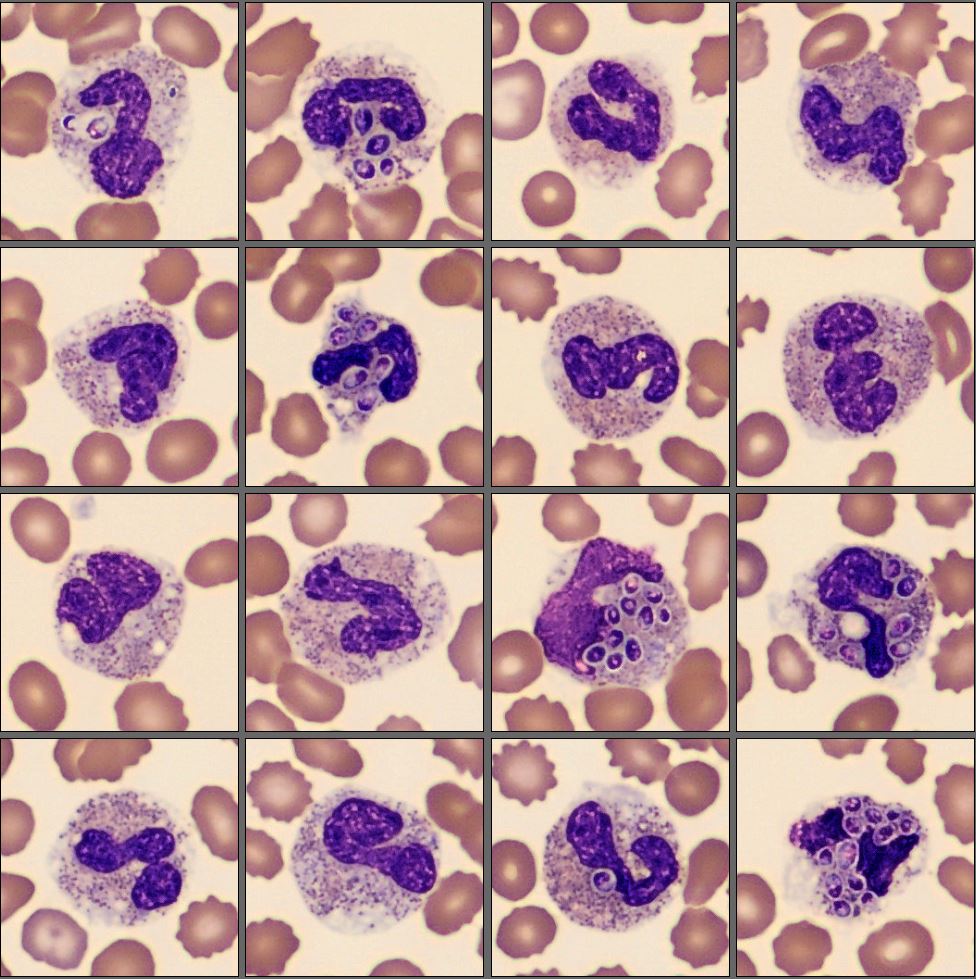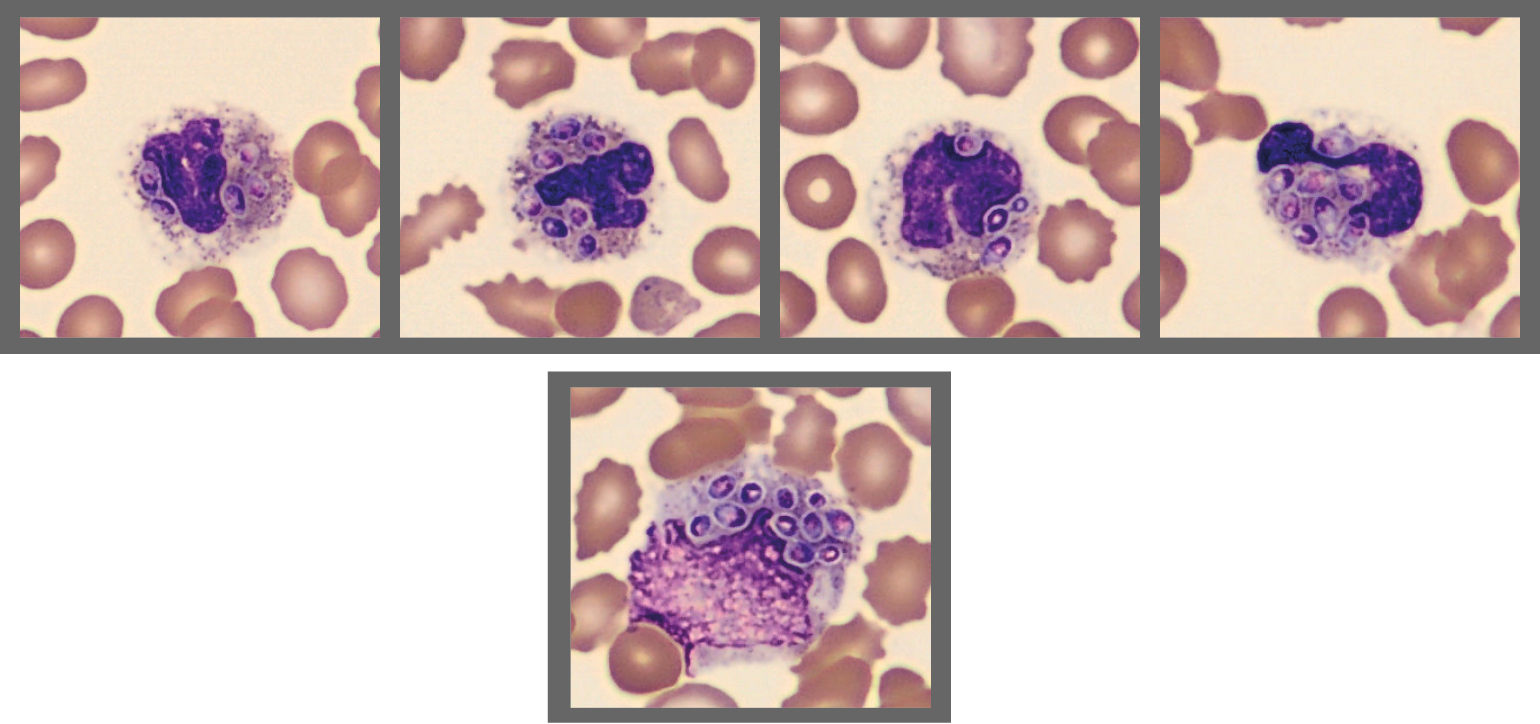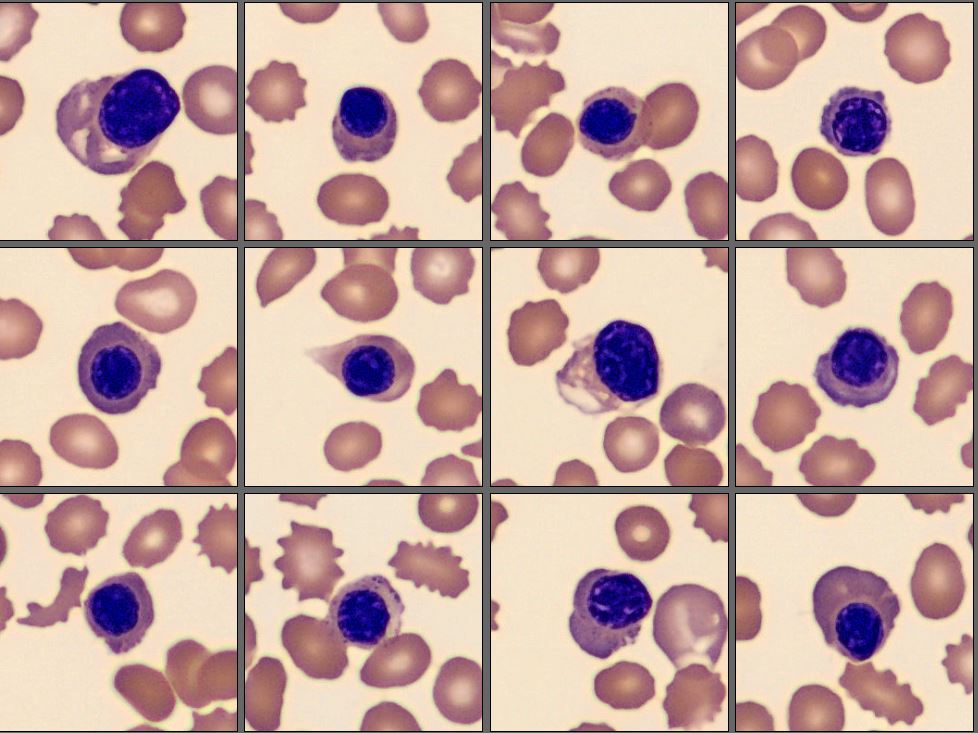Monthly Cell Challenge #7 / 2025

Darling, I see you….
Description:
A 54-year-old female came to the ER with fever, nausea, vomiting and diarrhea, abdominal pain, shortness of breath, weakness, and loss of weight and appetite. She also had severe sinus congestion, edema, and enlarged spleen and liver.
She has a known advanced HIV infection and was recently diagnosed with pneumonia. She also had a history of CMV (cytomegalovirus), increased LDH, liver enzymes, and transaminase.
CBC results:
| Test | Result | Units |
|---|---|---|
| WBC | 1,3 | x109/L |
| HGB | 85 | g/L |
| MCV | 80 | fL |
| PLT | 23 | x109/L |
The patient was immunocompromised and had organ failure, thrombocytosis and increased NRBC.
Smear review on CellaVision® DC-1:
| WBC Differential | % | x109/L |
|---|---|---|
| Band Neutrophils | 15,3 | 0,2 |
| Neutrophils | 82 | 1,1 |
| Lymphocytes | 0,9 | 0 |
| Monocytes | 1,8 | 0 |
| NRBC | 12/100 WBC | |
On the CellaVision® Remote Review Software the MedTech found multiple small intracellular yeasts in the neutrophils and monocytes, she also saw nucleated red blood cells, which she reported to the pathologist. The pathologist ordered a PCR test.



Diagnosis:
Disseminated Histoplasmosis
PCR: Histoplasmosis Capsulatum
Discussion:
Histoplasmosis, also known as Darling’s disease, is caused by the fungus Histoplasma Capsulatum. It is primarily a pulmonary disease and affects the lungs. When other organs are affected, it is called disseminated histoplasmosis, and if left untreated will be fatal. Histoplasmosis is more common in HIV/AIDS patients due to their lowered immune system. The number of NRBC is a response to anemia or a sign of bone marrow involvement. [1][2]
It was 1905 when the world-leading pathologist Samuel Taylor Darling discovered Histoplasmosis to be a fungal infection, thus the reason it is called Darling´s disease.[1]
Histoplasmosis is found in temperate zones worldwide, for example certain areas of the US, Southern Mexico, Southern and East Africa and parts of Asia. It is found in soil contaminated with bird or bat excretion and is transmitted by inhalation of H. capsulatum spores. It does not transmit from person to person. [1][2]
The overall mortality rate of histoplasmosis is low, and most cases will resolve spontaneously. In individuals with supressed immune system, progressive disseminated disease has a high mortality rate of 7-23%. Without treatment, disseminated disease is usually fatal. [2]
Treatment involves antifungal medications, for example Itrconazole, Amphotericin B and Corticosteroids. [2]
References:
[1] N S Dighe et al., Darling's Disease: A Review, Journal of Chemical and Pharmaceutical Research, 2009, 1 (1):88-101
[2] American Health Organization and World Health Organization, DIAGNOSING AND MANAGING DISSEMINATED HISTOPLASMOSIS AMONG PEOPLE LIVING WITH HIV, (2020), ISBN: 978-92-4-000643-0 (Accessed: 2025-05-15)